
Designing an extraordinary customer experience needs deep understanding of who are the customers, where are they coming from, what are their challenges, how are they making decisions, what make them delighted and many more. The entire customer journey needs to be understood thoroughly before getting into designing the right solution. Today, the entire experience can be influenced by multiple platforms (Offline/Online) and often continue for a long period of time. Hence, it becomes quite significant to evaluate what approach do we take to conduct our research and goals.
Research is the first step before designing the strategy. Knowing your customer enough is the most important step towards designing an exceptional experience.
Let’s start with PERSONAS,
Customer personas are made to design products and services to target a specific group of the customers rather than seeking a large group, and understanding multiple buying behaviours. They are more about understanding the customer segment, their needs, behaviour, motivations, frustrations and skills. Don’t confuse with the terms like customer persona, marketing persona or buyer persona, because all are the same.
Personas are real people.
Personas are created based on the actual data, gathered from organic interviews with real people — diverged and converged after observing similar behaviour patterns, needs and goals.
A buyer persona is the detailed description of a person, who expresses the characteristics of your potential customer.
A seller persona could be the one who understands the buyer’s characteristics like needs, wants, pains and gains.
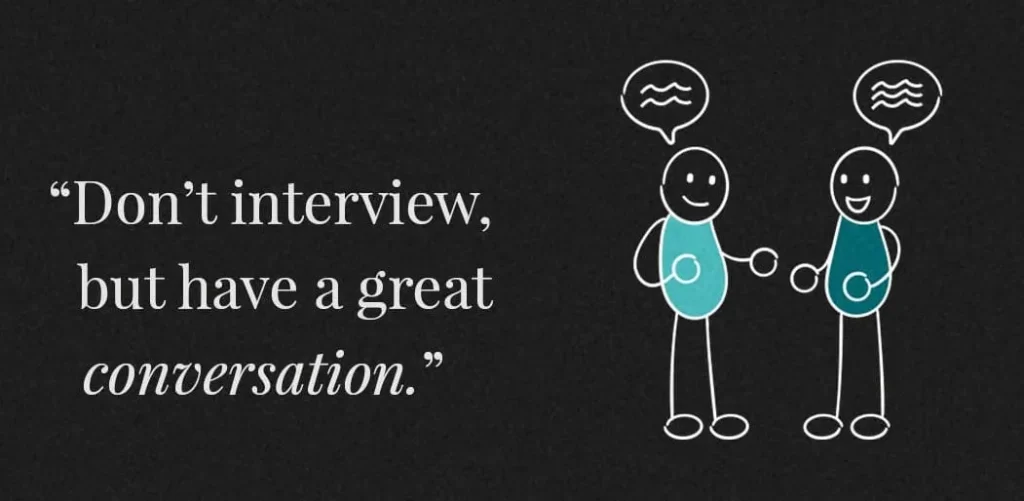
INTERVIEW —
- Instead traditional interview, encourage conversation
- Ask simple and open-ended questions
- Make customer feel comfortable / Don’t push hard
- Create such an atmosphere that they can speak their heart
- Be friendly, make interview fun
- Avoid unnecessary complications and confusions
- Be genuinely interested in them and listen
Both (Buyer’s & Seller’s) personas have equal importance and go hand in hand while designing customer experience.
Think about,
A mother is looking to purchase a new minivan for her young family. The ideal seller persona would be someone relatable, who not only knows all about the vehicle but is also a parent themselves and know what is important. How car seats fit in the middle row, how the head rest DVD players work, and how the trunk space works with strollers.
The mother is going to have a lot of questions about the functionality and safety, and will likely feel more confident with someone who understands a parent’s needs.
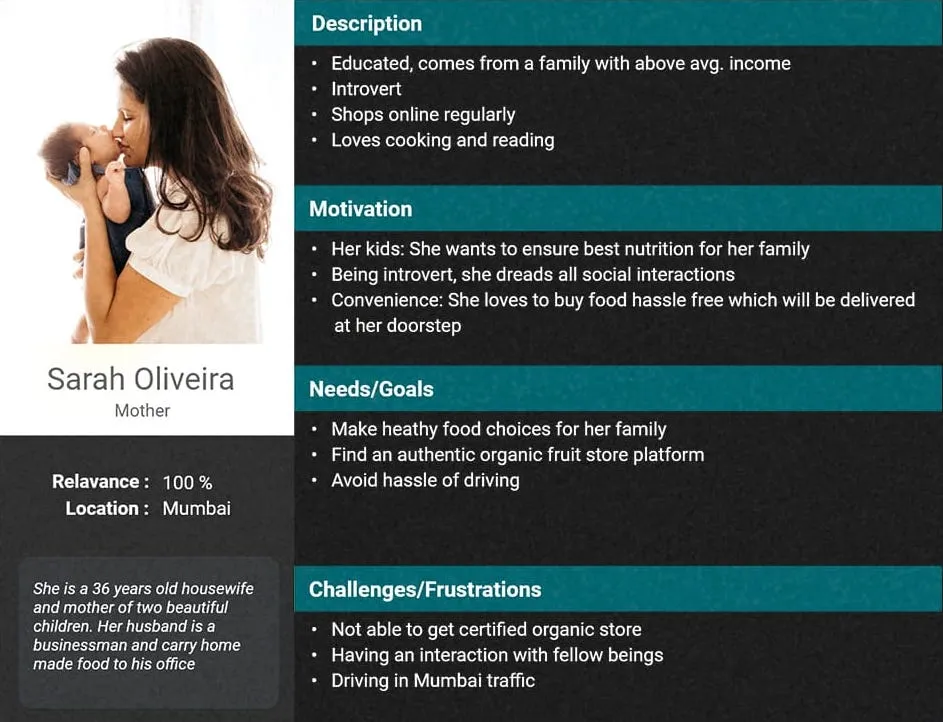
Buyer’s personas help businesses to understand —
- What are the needs and wants of the customer?
- How insights would help to deliver better services?
- Which marketing strategy would work better for a specific persona?
On the other side, seller’s personas help businesses, to align the stakeholders with the right buyers, with an objective to deliver effective customer-company communication and ultimately to improve sales results. It is more about aligning the right knowledge of a seller with the right demand of a customer.
*Atleast consider 3 to 5 personas in each for a project, to keep focus on designing experience.
EMPATHY MAPPING
Empathy mapping is a great way to make the team think from customer first philosophy. It helps to get a deeper understanding fo customer behaviour.
To design better, we need to understand customer from a human perspective, and not from a business perspective.
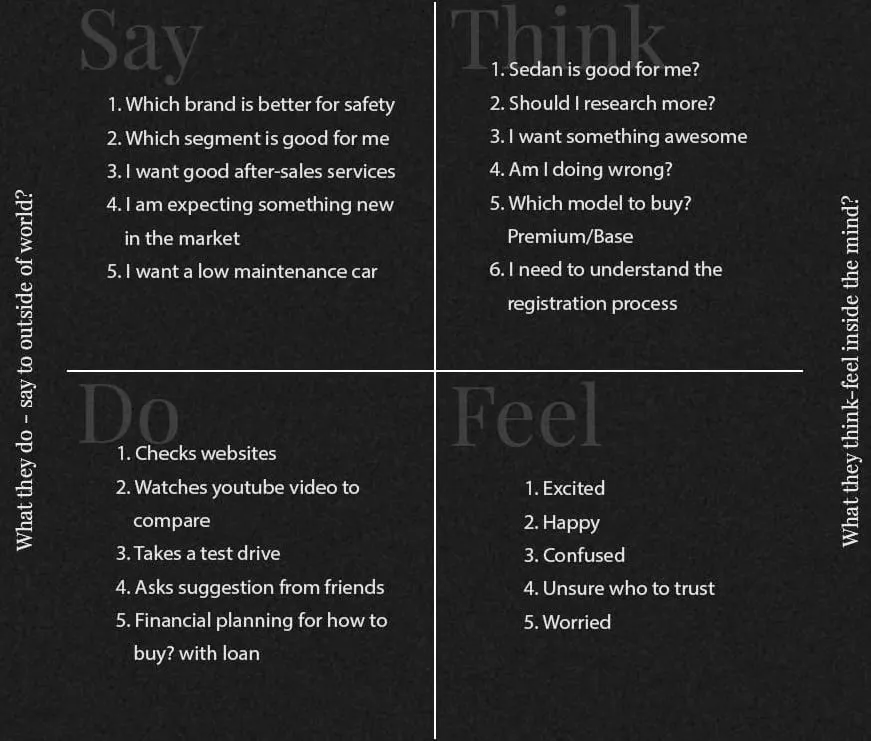
In customer research, empathy mapping is a simple and powerful tool to understand the needs of customers. It has four quadrants — Say, Think, Do and Feel. Each quadrant represents various aspects such as, before buying a product or service, what factors inspire customers to make decisions.
Do it effectively,
- Define a goal, collect materials and customer interview data
- Gather the team at a table
- Individually start generating sticky notes for each quadrant
- Don’t mind what foes where
- Bring different eyes to evaluate the placements
- Plan and proceed
Once the process is finished, turn data into an action plan as empathy mapping can be your secret weapon for a successful relationship with your customer.
Empathy Mapping is very exercise in the research because —
- It is a roadmap for a team t work collaboratively
- It helps to categorise and analyse research data
- It aids in decision making in the design process
- It identifies pains and gains of the customer
- It gives visual references for better understanding of customer
- It is a fast, inexpensive, and easily customisable tool
STAKEHOLDER MAPPING
Every person is a customer and also a stakeholder at the same time. It essential to align the customer needs/challenges and stakeholder expectation while designing the system. Stakeholder mapping tool makes it easy to align them while working on the project.
This mapping can be done in 4 steps,
- Identify
- Analyse
- Prioritise
- Engage
Identify —
Stakeholders are those people who have an interest in the outcome of the project or process — directly or indirectly. They might be government, boss, senior executives, partners, public, family, community, customers and many more.
To understand easily we can define them in 2 categories,
- Who contributes to the project
- Who are affected by the project
Analyze —
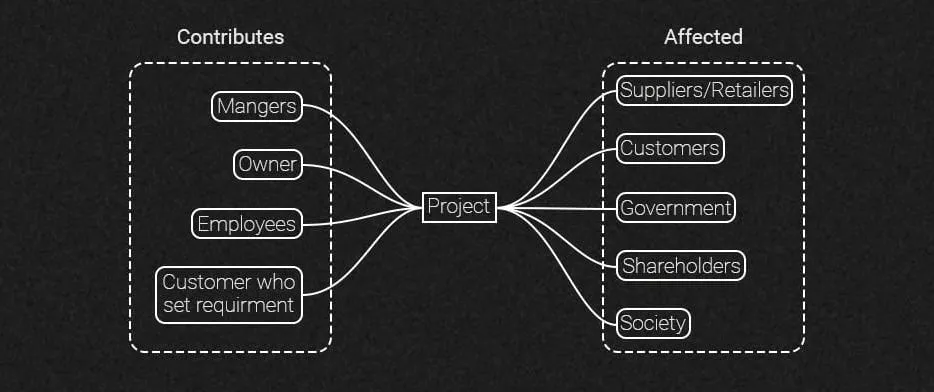
After identification, analysis helps to appoint roles and expectations to the stakeholders because every individual’s influence and support on the project varies from person to person.
Prioritize —
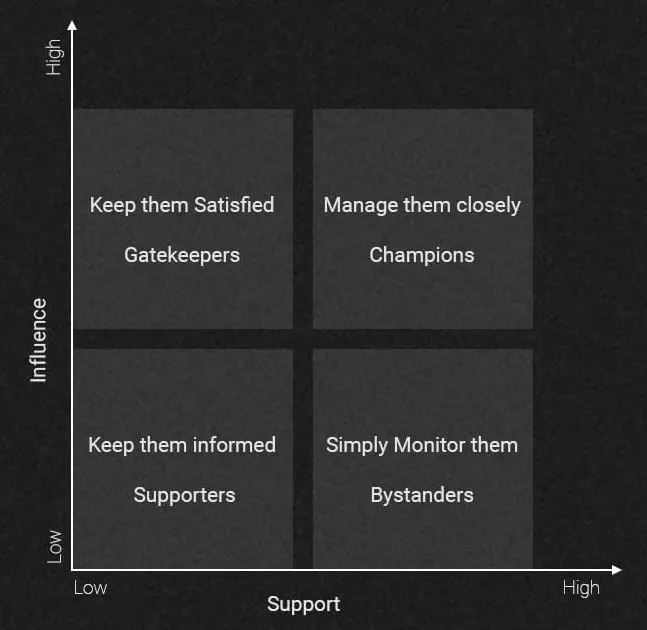
Once we prioritize stakeholders, it helps to identify stakeholders’ needs and interests. Categorize them properly, so that you can map into appropriate 4 square of engagement.
Remember, your analysis and prioritization need to be updated regularly, in order to reposition the stakeholders during the development of the project.
Engage —
In the final stage, engage and maintain a healthy relationship with key stakeholders to minimize the risk and maximize the success. This stage is important because,
- It helps the shape the project plan
- It is critical to success of the project
- Building multilevel understanding
- Getting ahead of the game
I hope, all these 3 steps will help you understand the customer in much thorough manner in order to map their journey. If the understanding of each customer is proper, it will be very effective while mapping their journey and comparing the difference between each journey and how they affect each other.


